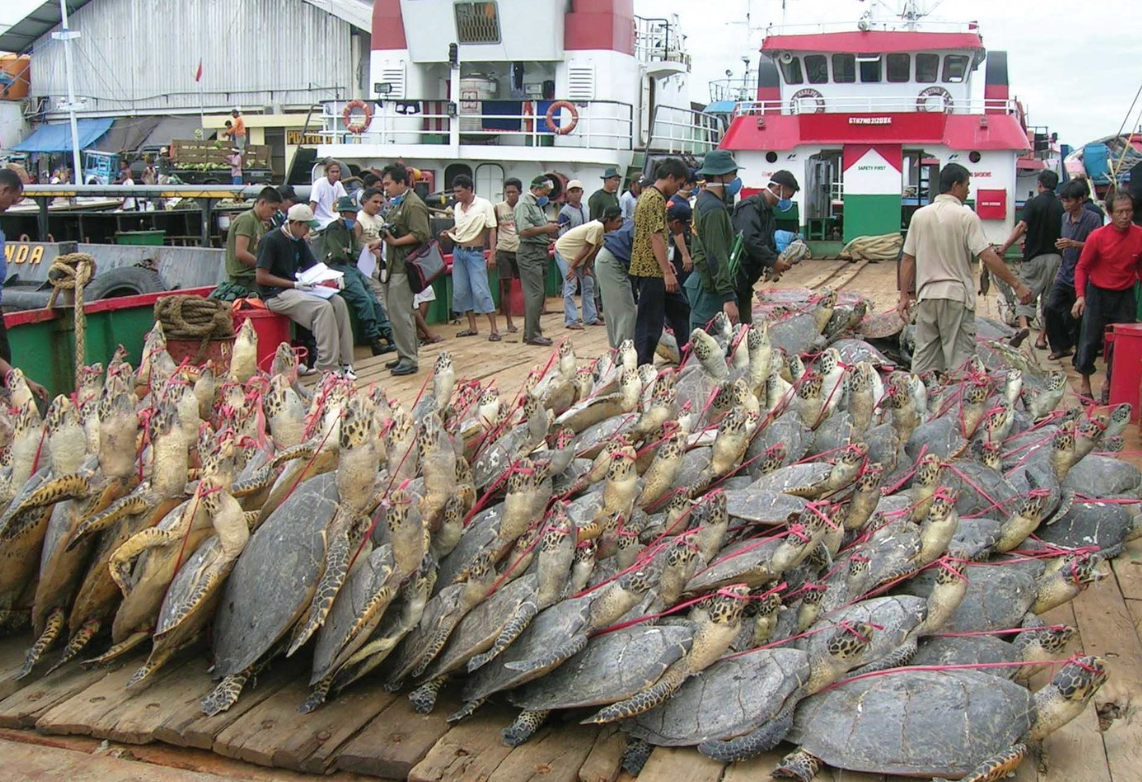One of the gravest fishery concerns is that of incidental capture, or bycatch, which accounts for the deaths of tens of thousands of turtles annually—deaths that are unintended, unwanted even by the fishers involved, and preventable. With years of data, world opinion, and technology combining to make the problem solvable, the fight against sea turtle bycatch may be reaching its tipping point at last.
Read MoreIn April 2007, scientists, corporations, conservation partners, publicists, and educators joined together to host a creative new kind of conservation awareness campaign: the Great Turtle Race. This major international event was organized by The Leatherback Trust, Tagging of Pacific Predators, Costa Rica’s Ministry of Environment and Energy, and Conservation International.
Read MoreWhether you live far inland or near the coasts, your actions have an impact on marine pollution. About 80 percent of marine debris, including plastics, comes from land-based sources such as landfills, industrial facilities, recreational activities, and sewage and storm runoff. These wastes can be carried great distances to the coasts and oceans by rivers, storm drains, and winds.
Read MoreOn a remote island in Indonesia’s Raja Ampat archipelago, the Ayau people have pledged to forgo the main dish of their typical Christmas feast this year and every year: green turtle.
Read MoreJust when it seemed that conservation efforts were turning the tide against declining sea turtle populations in Southeast Asia, a newer and bigger threat than ever imagined has emerged: illegal and unregulated poaching of sea turtles by vessels from China and Vietnam.
Read MorePrized since ancient times, tortoiseshell has been surrounded by legend for millennia. Old World trade routes moved this precious commodity to the Arabs, Chinese, Egyptians, Greeks, Romans, and Sinhalese along the coasts by praus, across continents by caravan, and in the open sea by flotillas of sea nomads. Today, the trade is still alive and well.
Read MoreFor centuries, the world’s largest marine herbivore, the green turtle, was exploited for eggs and meat until it teetered on the edge of extinction. Now, thanks to sustained conservation efforts, encouraging news has emerged for this megaherbivore: long-term nesting beach protection works.
Read MoreSince the “discovery” of French Guiana’s leatherbacks in the late 1960s, the country has been known to be the home of one of the largest leatherback nesting colonies in the world. Renowned turtle biologist Peter Pritchard shares a historical perspective on sea turtle research in the region.
Read MoreIn a recent assessment, the Wider Caribbean Sea Turtle Conservation Network (WIDECAST) answered the question definitively.
Read MoreThe Turtle Mother legend has remained amazingly consistent since I first heard it in 1973. In a war-torn community where rumors run rampant, consistency of any tale is unusual.
Read More








